
Copyright 2017 by Good Books, an imprint of Skyhorse Publishing, Inc. Photographs copyright 2017 by Bonnie Matthews All rights reserved. No part of this book may be reproduced in any manner without the express written consent of the publisher, except in the case of brief excerpts in critical reviews or articles. All inquiries should be addressed to Good Books, 307 West 36th Street, 11th Floor, New York, NY 10018. Good Books books may be purchased in bulk at special discounts for sales promotion, corporate gifts, fund-raising, or educational purposes. Special editions can also be created to specifications.
For details, contact the Special Sales Department, Good Books, 307 West 36th Street, 11th Floor, New York, NY 10018 or . Good Books is an imprint of Skyhorse Publishing, Inc., a Delaware corporation. Visit our website at www.goodbooks.com. 10 9 8 7 6 5 4 3 2 1 Library of Congress Cataloging-in-Publication Data is available on file. Cover design by Laura Klynstra Cover photo courtesy of istockphoto.com Print ISBN: 978-1-68099-174-1 Ebook ISBN: 978-1-68099-175-8 Printed in China Table of Contents  Acknowledgments I would like to extend a tremendous thank-you to the Fix-It and Forget-It community for welcoming me to this family and making my transition here such a positive one. I would also like to thank my husband, children, family, and friends who encouraged me every step of the way with their love and support.
Acknowledgments I would like to extend a tremendous thank-you to the Fix-It and Forget-It community for welcoming me to this family and making my transition here such a positive one. I would also like to thank my husband, children, family, and friends who encouraged me every step of the way with their love and support.
I am beyond grateful for each and every one of you! Welcome to Fix-It and Forget-It Lazy and Slow! L ets be honest: we all love our slow cookers! We are able to keep our house cool on hot days, keep our family fed on busy days, feed our friends on the go, and feed ourselves on lazy days! We know slow cookers arent just for using in the winter. This book was designed to feed your family a delicious, home-cooked meal every day of the year, week by week, Sunday through Saturday. Yup! All 365 days. All 52 weeks. Ive also done my best to include recipes for most of the major holidays. To make your lives even easier, Ive included weekly shopping lists.
Lets talk about how this book works This book is divided into four seasons; Spring, Summer, Fall, Winter. Each season has thirteen weeks worth of recipes. Each week begins on a Sunday and ends on a Saturday. Youll have a shopping list at the beginning of each week to make your trip to the grocery store a breeze. Ive designed each week so you can eat a variety of recipes, all while using the leftovers from your previous meals. So often, we let all this good food we prepare go bad in the fridge! By using our leftovers to make another meal or two, you should hopefully have a bit less waste.
I encourage you to read through the entire weeks worth of recipes before hitting the grocery store along with the shopping list. Personalize it! Change your protein, veggie, etc. if there is something else you prefer instead. If you prefer to serve your meal with pasta instead of rice, or quinoa instead of pasta, go for it! Just be sure to make these notes on your weekly shopping lists so you come home from the grocery store with the ingredients you need. Each shopping list is divided into categories to make your grocery store trip efficient. The lists include a section called Do You Have These On Hand? for common ingredients you might already have in your home, but you may find you already have things from other categories as well.
For example, cup butter may be listed in the Dairy and Refrigerated section. You may already have this. In this case, just cross it off your list. However, there may be 4 Granny Smith apples listed under Produce and you may only have two apples. Just change the quantity on the list for yourself. Sometimes youll see optional next to certain ingredients on the weekly shopping list.
This means it may be a topping or optional ingredient in a recipe for the week. This is another reason I encourage you to read through the whole weeks worth of recipes before you shop for the week. You might want the optional lettuce on your tacos, but not the avocado. Or, you may like pepperoncini on your tacos, but not lettuce. You get the idea. Like I said, change up your shopping list if something doesnt work for you.
Since most holidays change days of the week from year to year, you may need to rearrange your week a bit for the recipes to fit exactly with the holiday. A Few Things You Should Know Not all slow cookers are created equal or work equally as well for everyone! Those of us who use slow cookers frequently know we have our own preferences when it comes to which slow cooker we choose to use. For instance, I love my programmable slow cooker, but there are many programmable slow cookers Ive tried that Ive strongly disliked. Why? Because some go by increments of 15 or 30 minutes and some go by 4, 6, 8, or 10 hours. I dislike those restrictions, but I have family and friends who dont mind them at all! I am also pretty brand loyal when it comes to my manual slow cookers because Ive had great success with those and have had unsuccessful moments with slow cookers of other brands. So, which slow cooker(s) is/are best for your household? It really depends on how many people youre feeding and if youre gone for long periods of time.
Here are my recommendations:
| For 23 person household | 35 quart slow cooker |
| For 45 person household | 56 quart slow cooker |
| For a 6+ person household | 67 quart slow cooker |
Large slow cooker advantages/disadvantages: Advantages: You can fit a loaf pan or a baking dish into a 6- or 7-quart, depending on the shape of your cooker. That allows you to make bread or cakes, or even smaller quantities of main dishes. (Take your favorite baking dish and loaf pan along when you shop for a cooker to make sure theyll fit inside.) You can feed large groups of people, or make larger quantities of food, allowing for leftovers, or meals, to freeze. Disadvantages: They take up more storage room. They dont fit as neatly into a dishwasher. If your crock isnt full, you may burn your food.
Small slow cooker advantages/disadvantages: Advantages: Theyre great for lots of appetizers, for serving hot drinks, for baking cakes straight in the crock, and for dorm rooms or apartments. Great option for making recipes of smaller quantities. Disadvantages: Food in smaller quantities tends to cook more quickly than larger amounts. So keep an eye on it. Chances are, you wont have many leftovers. So, if you like to have leftovers, a smaller slow cooker may not be a good option for you.
My recommendation: Have at least two slow cookers; one around 3 to 4 quarts and one 6 quarts or larger. A third would be a huge bonus (and a great advantage to your cooking repertoire!). The advantage of having at least a couple is you can make a larger variety of recipes. Also, you can make at least two or three dishes at once for a whole meal. Manual vs. programmable If you are gone for only six to eight hours a day, a manual slow cooker might be just fine for you.
If you are gone for more than eight hours during the day, I would highly recommend purchasing a programmable slow cooker that will switch to warm when the cook time you set is up. It will allow you to cook a wider variety of recipes. The two I use most frequently are my 4-quart manual slow cooker and my 6-quart programmable slow cooker. I like that I can make smaller portions in my 4-quart slow cooker on days I dont need or want leftovers, but I also love how my 6-quart slow cooker can accommodate whole chickens, turkey breasts, hams, or big batches of soups. I use them both often. Get to know your slow cooker Plan a little time to get acquainted with your slow cooker.

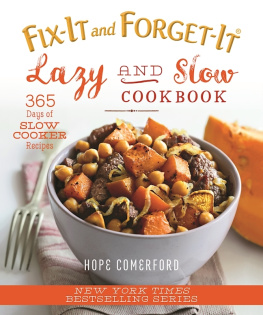
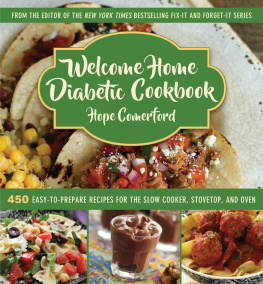
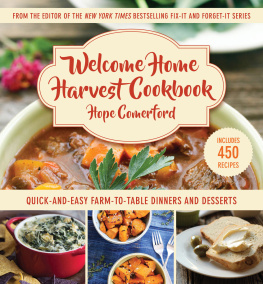
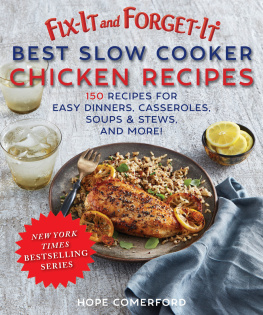
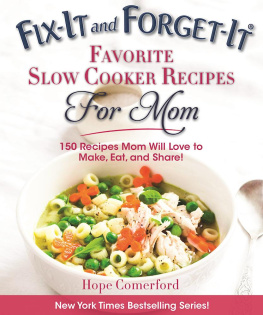
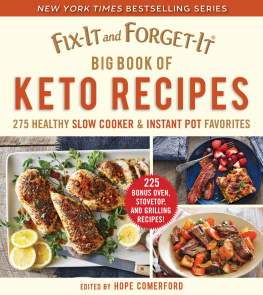
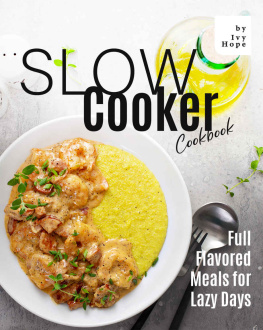
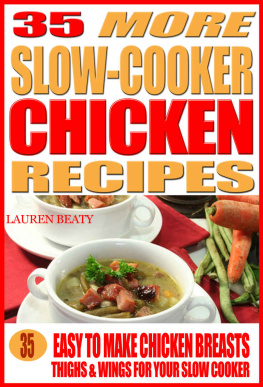


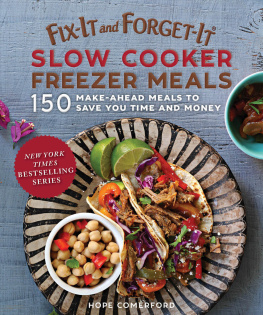
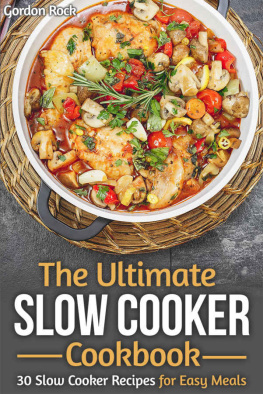

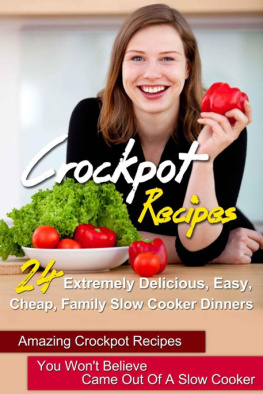
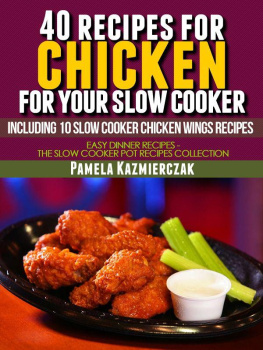
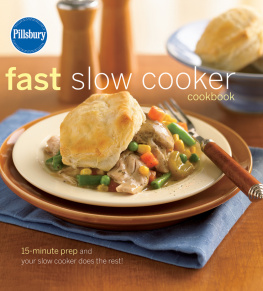



 Acknowledgments I would like to extend a tremendous thank-you to the Fix-It and Forget-It community for welcoming me to this family and making my transition here such a positive one. I would also like to thank my husband, children, family, and friends who encouraged me every step of the way with their love and support.
Acknowledgments I would like to extend a tremendous thank-you to the Fix-It and Forget-It community for welcoming me to this family and making my transition here such a positive one. I would also like to thank my husband, children, family, and friends who encouraged me every step of the way with their love and support.